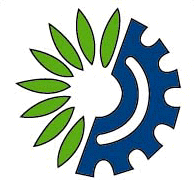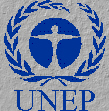 |
PRESS RELEASE
Improved Access to
better and more harmonised Information for Environmental
Decision-Making
|
 |
Memorandum of understanding between
European Environment Agency and United Nations Environment Programme
creates new possibilities
The co-operation between the European
Environment Agency (EEA) in Copenhagen and the United Nations Environment
Programme (UNEP) is being expanded and extended.
A new Memorandum of Understanding was
signed on Thursday 23 October 1997 between the Executive Director of
the European Environment Agency, Domingo Jiménez-Beltrán, and Regional
Representative and Director of UNEP’s Regional Office for Europe, Frits
Schlingemann. The meeting between the two Directors was held in
Copenhagen, Denmark.
EEA and UNEP have already been
co-operating for some time, in order to develop mutually supportive
activities. The new Memorandum of Understanding between the two
organisations provides new possibilities for a deeper and closer
relationship.
The background of the new situation
between EEA and UNEP can first of all be found in the fact that the two
organisations already have mutually complementary activities, goals and
requirements to satisfy, but each has restricted means with which to
achieve them. An example from the capacity-building and networking side
is the complementarity between UNEP’s ENRIN (Environmental and Natural
Resources Information Networking) and EEA’s EIONET (Environment
Information and Observation Network). While the EEA’s main focus is on
EU and Accession Countries, UNEP has global strengths and thus is able
to cover complementary areas around the periphery of Western Europe, in
both Central and Eastern Europe and in the Mediterranean Region.
Together it is possible to build a wider and stronger network.
Many goals
There are many goals of this
co-operation. In the context of the "Environment for Europe"
process and in particular, the next major European
Ministerial Conference on the Environment to take place in Aarhus,
Denmark in June 1998, the EEA’s and UNEP’s mutual activities should
improve the efficiency of both organisations and provide an improved
information base. For example, the cooperation is facilitating the
development of the new progress report on the state of the pan-European
environment (Dobris+3) to be ready early in 1998, as a follow-up to the
first Dobris Assessment published in 1995, as well as input from this
process in the preparation of UNEP’s second Global Environmental
Outlook (GEO-2). The groundwork being laid for a joint reporting
activity on the Mediterranean area will also benefit from this deeper
co-operation. Fundamental to all these activities is the use of
existing capacities, the catalysis and mobilisation of additional
resources, and the complementarily of both agencies’ networks.
A major objective is also to improve
access to environmental information, for countries with economies in
transition and in the greater Mediterranean region as well as
decision-makers civil society and the European public in
general. In this context EEA and UNEP will support the
strengthening of capacities of countries to manage and exchange
information on the environment (especially the technical base needed to
support data gathering and dissemination) to produce state of
environment reports and assessments.
This cooperation will benefit all the
European partners of the two organisations. It will also enable EEA and
UNEP to work more closely with the European Commission’s PHARE, TACIS
and MEDA programmes.
Have already made
progress
"Our co-operation, however, is not new.
Joint ventures have already been carried out including assessment of
critical issues", informs EEA’s Executive Director, Domingo
Jiménez-Beltrán. He refers in particular to a joint statement produced
on water resources and pollution in the beginning of 1997 and a next
statement on chemicals which is under preparation. Both directors agree
that drinking water and chemical pollution are a major concern for the
population in Europe. It is essential to have as much information as
possible about the presence of chemicals such as pesticides in
groundwater and in the food chain. "Doing things together will help us
do them better and more efficiently, as we are already doing with the
WHO Regional Office here in Copenhagen. This is real ‘networking’ ",
says Domingo Jiménez-Beltrán.
Copenhagen, 23
October 1997
For further
information, please contact:
Ms. Gertrud Attar, Information
Assistant, United Nation’s Environment Programme UNEP
11, Chemin des Anémones, CH-1219 Châtelaine-Geneva, Switzerland
tel: +41 22 979 9234, fax: +41 22 797 3420
Mr. Ernst R. Klatte,
Communications Officer, European Environment Agency EEA
Kongens Nytorv 6, DK-1050 Copenhagen K, Denmark
tel: +45 33 36 71 53, fax: +45 33 36 71 99





Document Actions
Share with others